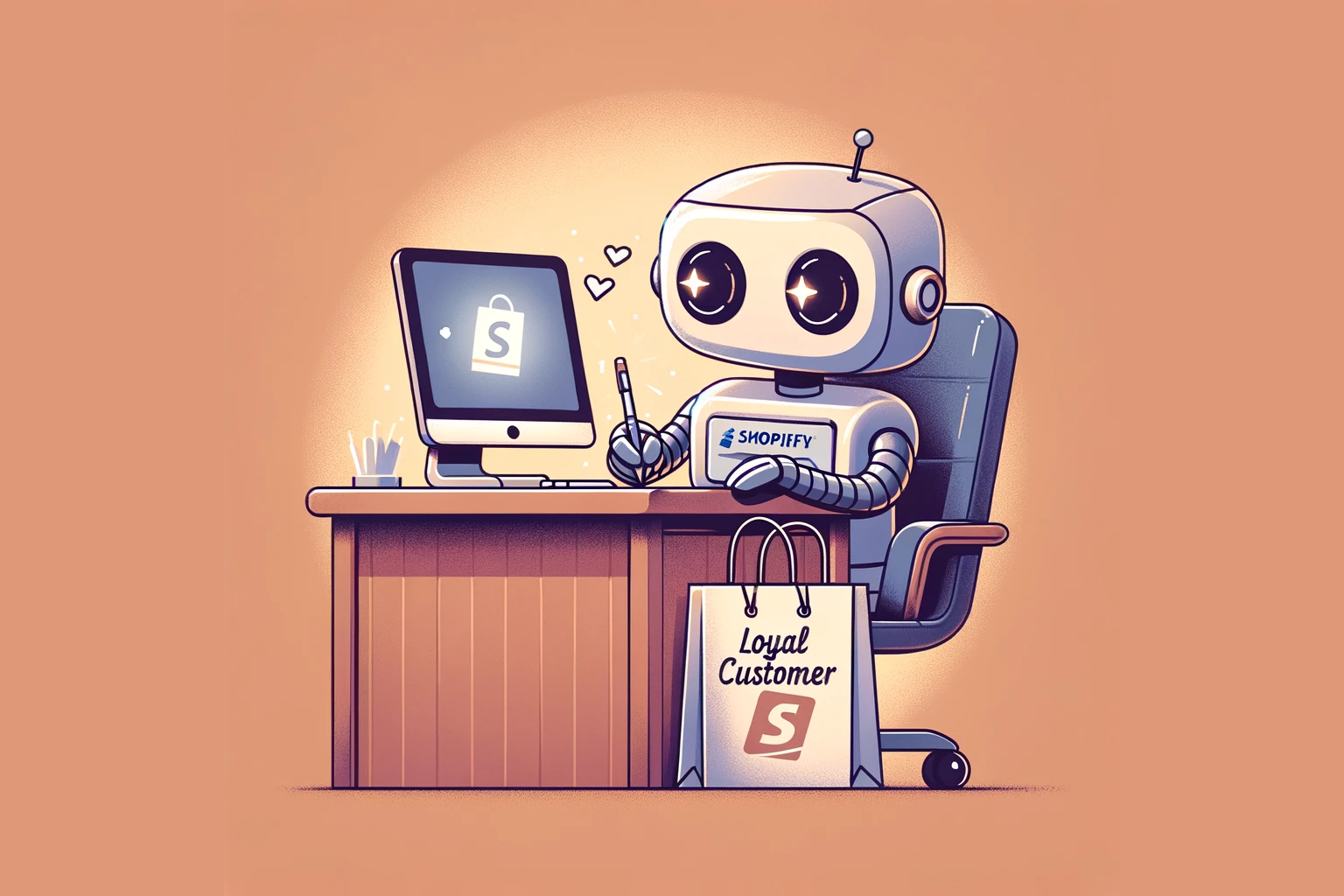
Hey there, Shopify store owners! Picture this: amidst the hustle and bustle of managing your online store, tracking inventory, and brainstorming the next big sale, you pause and think, "Wouldn't it be nice to give a shoutout to my loyal customers?" Well, guess what? Today we're diving into how to create a bot that not only identifies your loyal customers but also sends them a personalized thank you email.
The Game Plan
Our mission is twofold:
- Analyze your Shopify store orders to pinpoint loyal customers.
- Automate sending heartfelt thank-you emails to those customers.
Sounds like a plan? let's get the tools and get to work.
Toolkit Checklist
Before we start crafting, ensure you have:
- A BotFleet account, ready for bot deployment.
- Basic Python chops, for scripting our gratitude-expressing automaton.
- Access to your Shopify store's API, for fetching order data.
The Script
We'll write a Python script that uses the Shopify API to fetch recent orders, identifies customers with multiple purchases, and sends a thank-you email. Here's a basic blueprint to get us started:
import os
import requests
from smtplib import SMTP
from email.mime.text import MIMEText
from email.mime.multipart import MIMEMultipart
# Shopify store credentials
shopify_url = "https://yourstore.myshopify.com/admin/api/2023-10/orders.json"
shopify_api_key = os.environ.get("SHOPIFY_API_KEY")
shopify_password = os.environ.get("SHOPIFY_PASSWORD")
# Email setup
sender_email = "[email protected]"
password = os.environ.get("EMAIL_PASSWORD")
def fetch_orders():
response = requests.get(shopify_url, auth=(shopify_api_key, shopify_password))
if response.status_code == 200:
return response.json()['orders']
return []
def identify_loyal_customers(orders):
customer_orders = {}
for order in orders:
email = order.get('email')
if email:
customer_orders[email] = customer_orders.get(email, 0) + 1
# Considering loyal customers as those with 3+ orders
loyal_customers = {email for email, count in customer_orders.items() if count >= 3}
return loyal_customers
def send_thank_you_emails(loyal_customers):
for email in loyal_customers:
message = MIMEMultipart("alternative")
message["Subject"] = "Thank You from [Your Store Name]!"
message["From"] = sender_email
message["To"] = email
# Customize your thank-you message below
html = """
<html>
<body>
<p>Hi there,<br>
Thank you for being one of our most valued customers. We're thrilled to have you with us.<br>
[Your Personalized Message Here]
</p>
</body>
</html>
"""
part = MIMEText(html, "html")
message.attach(part)
with SMTP("smtp.example.com", 587) as server:
server.starttls()
server.login(sender_email, password)
server.sendmail(sender_email, email, message.as_string())
print(f"Sent thank-you email to {email}")
def main():
orders = fetch_orders()
loyal_customers = identify_loyal_customers(orders)
send_thank_you_emails(loyal_customers)
What's Happening Here?
fetch_orders: Grabs recent orders from your Shopify store.
identify_loyal_customers: Filters out customers with 3 or more orders.
send_thank_you_emails: Crafts and sends personalized thank-you emails to your loyal customers.
Setting Up the Bot on BotFleet
Head over to BotFleet and go to the bots section. Name it something memorable, like "Loyal Customer Thank-You Bot".
Indicating script
Copy the Python script we just wrote into the script section.
Indicating requirements
We're using the requests library. Let's add this to our requirements:
requests
Indicating environment variables
Set EMAIL_PASSWORD, SHOPIFY_API_KEY, SHOPIFY_PASSWORD as environment variables:
EMAIL_PASSWORD=your_email_password
SHOPIFY_API_KEY=your_shopify_api_key
SHOPIFY_PASSWORD=your_shopify_password
Schedule It
Set your bot to run every day. You can use the following cron expression to run your bot every day:
0 0 * * *
Beyond the Basics
This script is just the starting point. You can customize it further by:
- Adding more personalized touches to the email based on customer order history.
- Creating different tiers of loyalty and customizing messages accordingly.
- Integrating with a CRM tool for deeper customer relationship management.
Wrapping It Up
And there you have it. A simple yet powerful way to automatically recognize and thank your most loyal customers, making them feel valued and encouraging even more repeat business.
Got thoughts, tweaks, or tales of success with your bot? Reach out. Your insights not only help others but also spark new ideas for making the most of our digital tools. Happy bot-building!